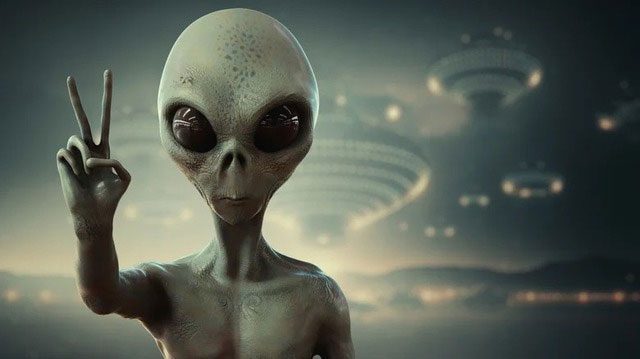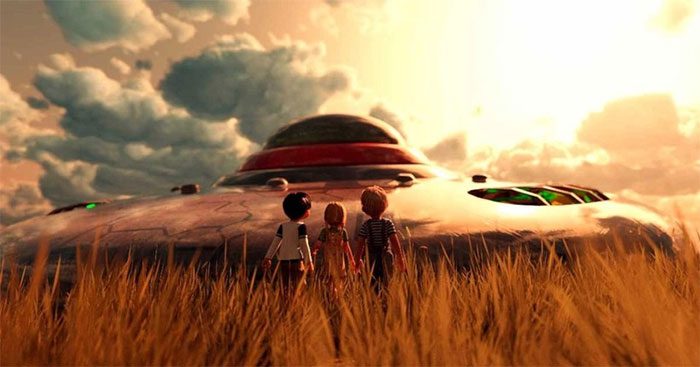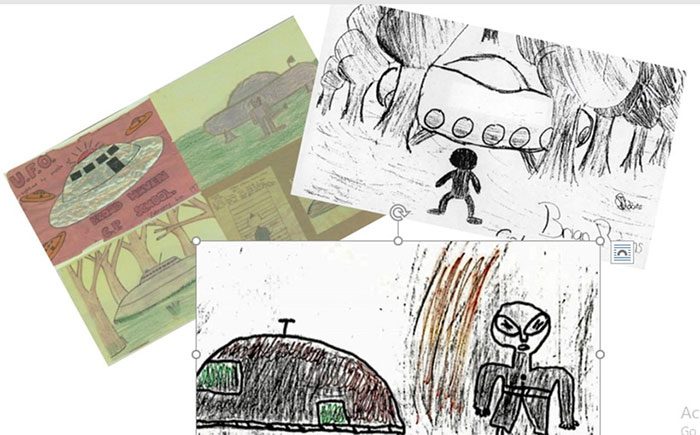For many years, UFOs (Unidentified Flying Objects) have been a topic of ridicule among scholars regarding those who believe in them.
Imagine you are having a friendly conversation with a stranger and they suddenly say: “Can you believe it, I saw Bigfoot on Saturday.” At that moment, you might feel skeptical and find it hard to believe. But what if a third person joined the conversation to corroborate this story? And then a fourth, a fifth, and eventually a total of 62 people confirming the same tale—what would you think? Would each of them be lying? What if these witnesses were children? But what if none of them admitted to making up the story?

This is exactly what happened at Ariel School in Ruwa, Zimbabwe, in 1994. Except, instead of claiming to see Bigfoot, the children reported seeing aliens—not just one, but two aliens along with a spacecraft parked outside the schoolyard. The aliens allegedly walked around, communicated with the children telepathically, delivered messages about an impending environmental disaster, and then left.
All the witnesses in this story were children aged 6 to 12 years. Interviews with them displayed a sincerity that only children can convey. To this day, some people still believe it was all a hoax or a grand illusion. But there are others who firmly believe that it actually happened.
However, the situation gradually changed as some military leaders and high-ranking politicians around the world reportedly acknowledged the phenomenon. Not only in the U.S. and Europe, but even in Africa, UFOs have stirred public interest.
UFOs Appearing Before Students?
Ariel School is located in Ruwa, a small rural area 22 km from Harare, the capital of Zimbabwe. At the time of the UFO event, it was not even a town, but merely a locality associated with agriculture. Ariel is a private school with high tuition fees, and most of its students come from middle-class, affluent white families.
The UFO event occurred on September 16, 1994, while teachers were attending a meeting inside the school, and students were enjoying their morning break playing outside.

Illustration of Ariel School students and a UFO. (Image: IT).
When they returned to class, the children rushed to tell their teacher about a strange story, but it was dismissed as mere nonsense. The following day, many parents came to the school to find out what strange occurrence had taken place with their children. Soon after, the story was also broadcast on ZBC radio. Before long, foreign journalists and many UFO experts arrived at the school to investigate.
The first reporter on the scene was Tim Leach from the BBC. He arrived three days later and was truly astonished by what he heard while interviewing the students. “I can easily process information from war zones, but I cannot understand this event,” he said.
Following Leach, Cynthia Hind, a UFO researcher from Zimbabwe, visited the school the next day. She interviewed the children and asked them to draw what they had seen. Two months later, John Mack, a psychiatry professor from Harvard University in the U.S., also came to conduct further interviews.
In all three interviews, 62 students, aged 6 to 12, recounted a remarkably similar story. They claimed that while playing outside, they saw several UFOs. These silver, disc-shaped objects were very clearly visible in the sky. At least one of these flying discs was said to have landed in a field just beyond the school boundaries.
Subsequently, one to four beings with large eyes dressed in black emerged from the UFO and approached the children. Some students confessed to running away in fear, but the older kids stayed behind to observe them.
From this point, the versions of the story began to differ. According to Professor Mack, the aliens communicated telepathically with the children. It is believed they delivered an ecological warning to the students, stating that humans must stop polluting the planet, or the world would come to an end. Hind later accepted Mack’s explanations and incorporated them into her own interpretations of the story.
Belief and Skepticism
Of course, the question arises: what did the children actually see? According to UFO researchers, the event at Ariel is one of the most significant UFO sightings in modern history. However, skeptics dismiss the incident as a hoax.
Meanwhile, Cynthia Hind argues that an important factor affecting people’s belief is that the children were not in full agreement with each other. Many reported seeing a strange entity but did not necessarily consider it an alien.

UFO and aliens as illustrated by the witnessing students. (Image: IT).
Some relied on local folklore to explain what they saw, suggesting that those beings were “Zvikwambo” (human spirits nurtured by magic) or “Tokoloshe” (evil goblins in Shona and Ndebele folklore).
Hind believes that because the children lived in a rural area, they may not have been familiar with the idea of UFOs in popular culture. Many of them had not seen Hollywood movies or TV shows about aliens.
Therefore, she feels that their accounts are credible because their imaginations were not influenced by films, as evidenced by their diverse interpretations. One or two children might lie, but when over sixty kids recount the exact same incident, it is hard to believe that nothing extraordinary occurred.
However, Hind’s explanation has been rebutted by many. They argue that prior to the Ariel event, Africa had also been engulfed by a UFO craze in the media.
The children themselves came from affluent families and had access to all modern conveniences. They did not live in isolation from audiovisual media. Additionally, Hind interviewed them in groups, which could have led to cross-influence on their stories.
Mack’s findings are even more complicated. He visited the children several weeks after the incident, giving them ample time to embellish their stories.
Mack also has a somewhat controversial reputation for leading his witnesses. Specifically, it is believed that he may have “nurtured” the idea in the children’s minds that the beings communicated with them telepathically.
Furthermore, while 62 students claimed to have seen something, dozens of others admitted they saw nothing at all. Some saw one UFO, others saw more. Some witnessed one being, while others saw four.
In the end, people will continue to draw their own conclusions about the Ariel UFO event. UFO researchers will find reasons to believe, and skeptics will look for flaws in the children’s accounts to refute them. They claim the incident may be a case of mass hysteria but provide very little evidence as to why they think so.
To this day, after 28 years, many of the students present at that time still assert that their story is true. And to this day, everything remains a mystery.




















































